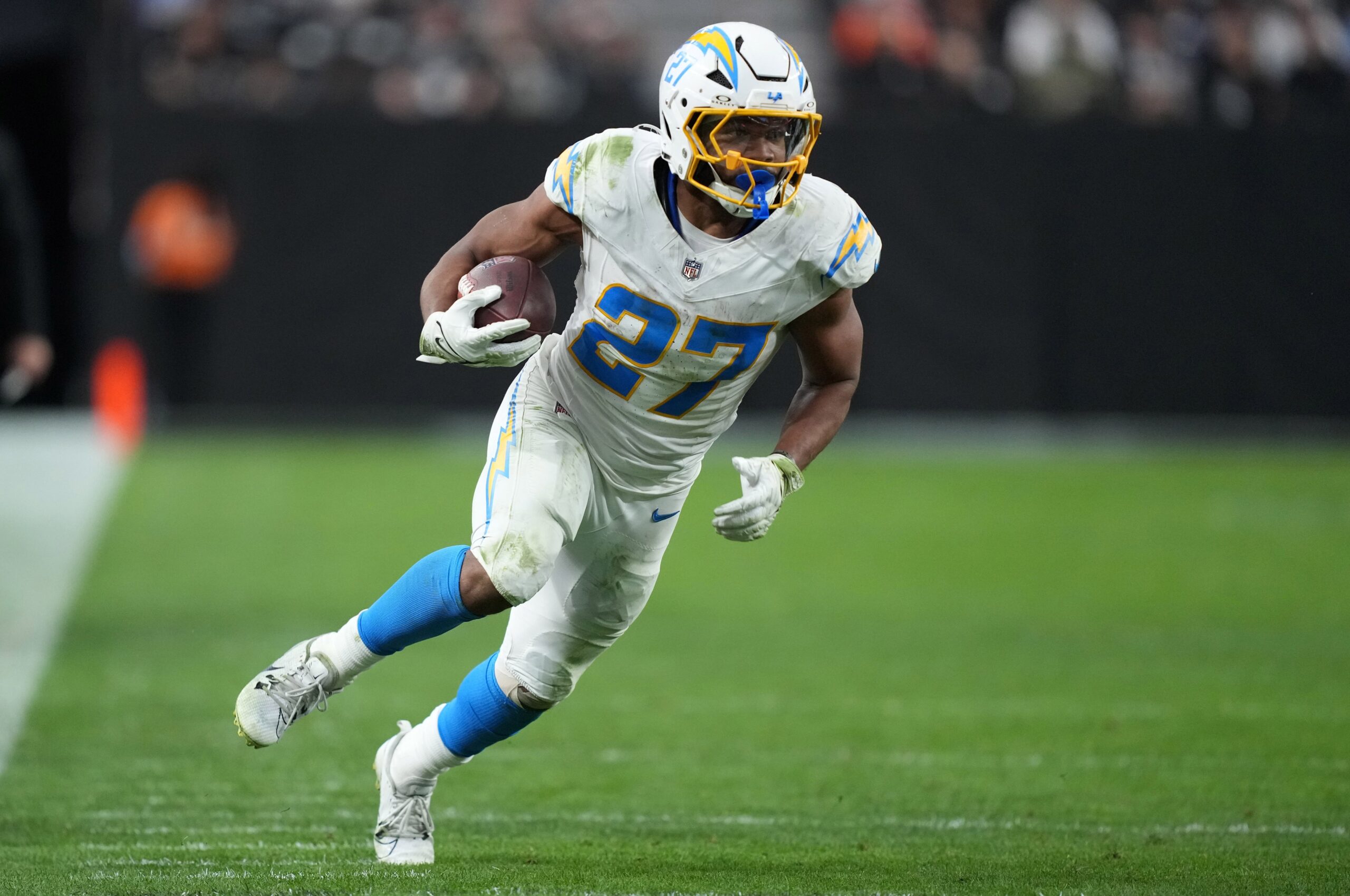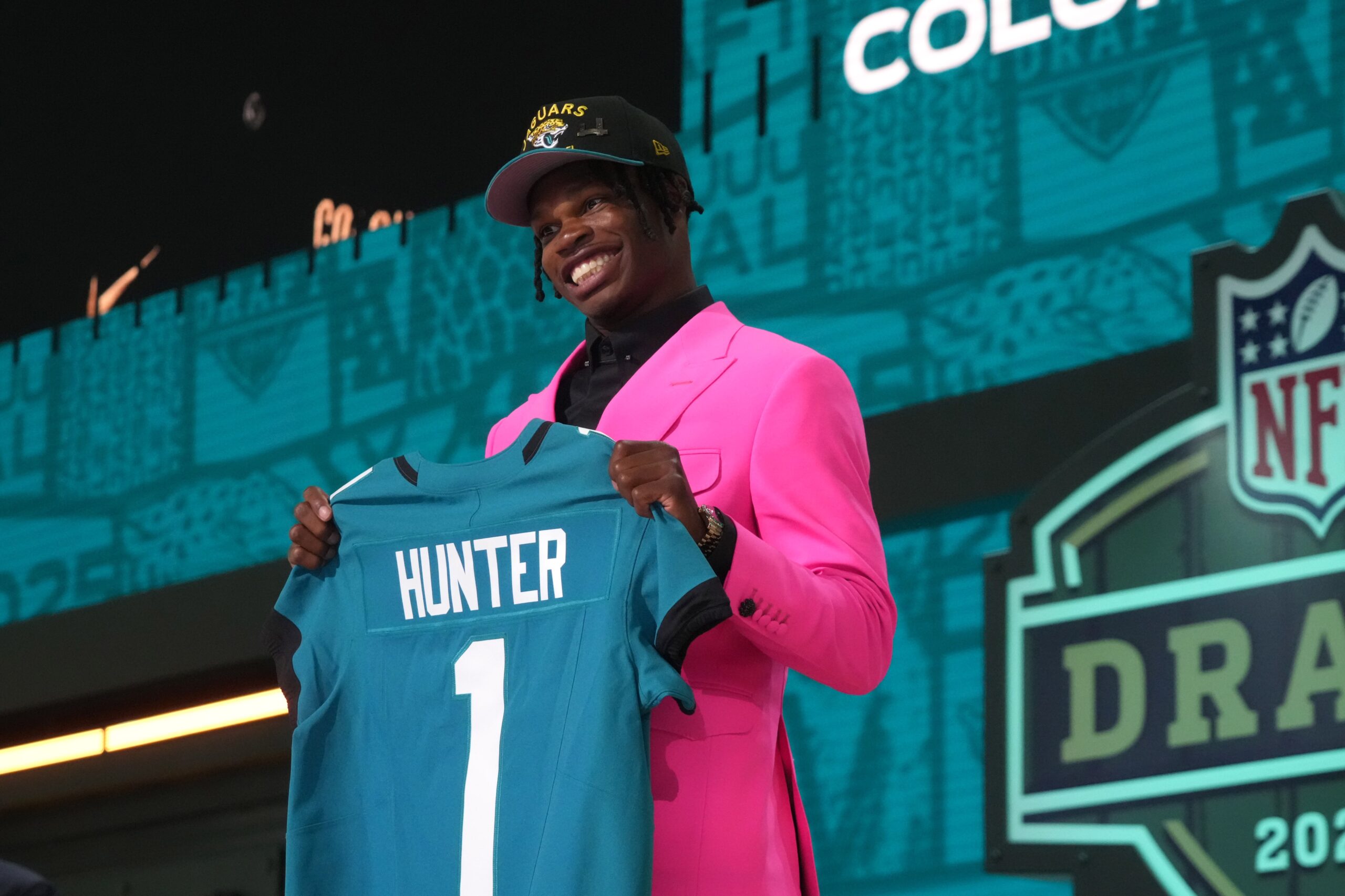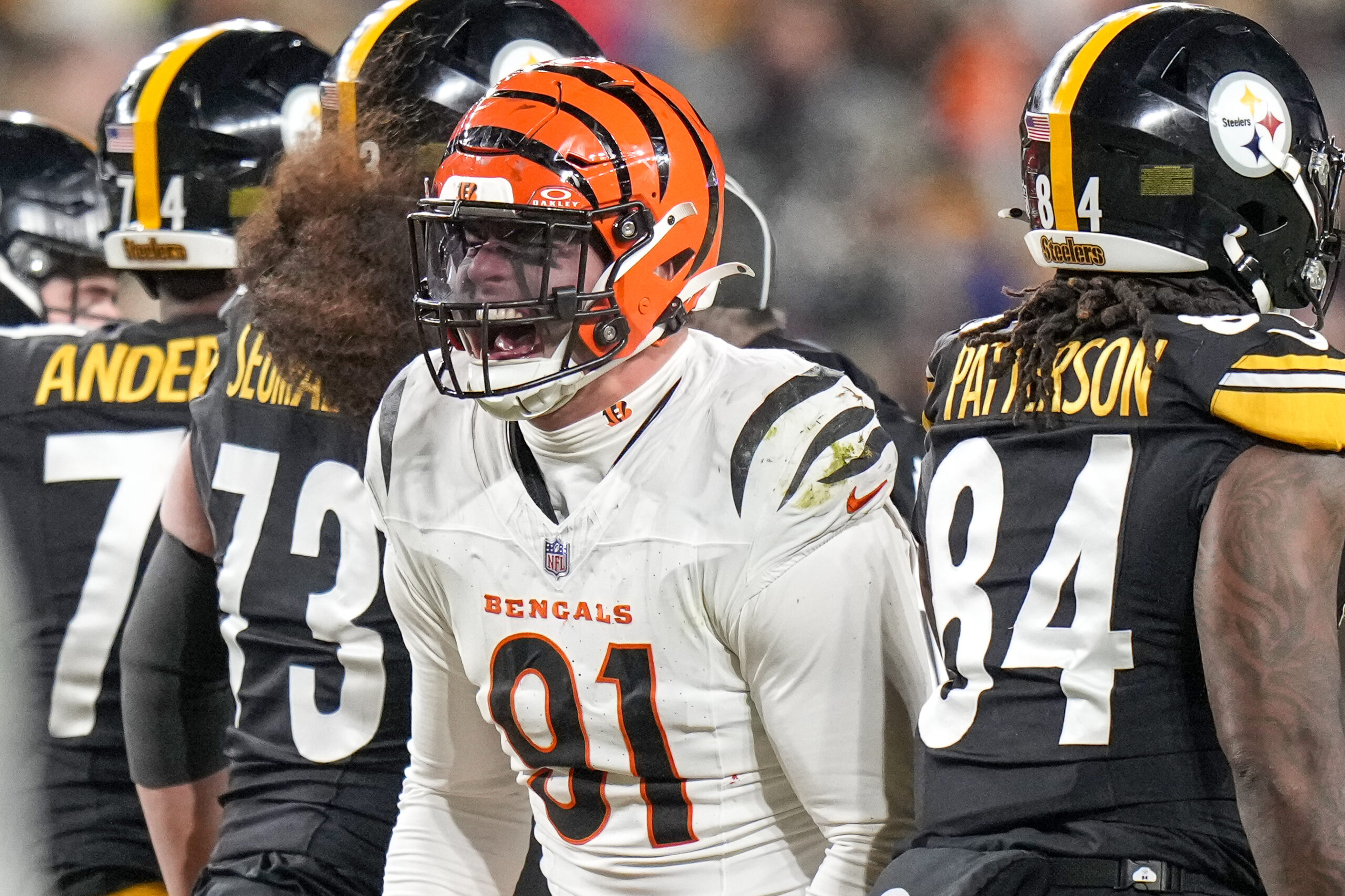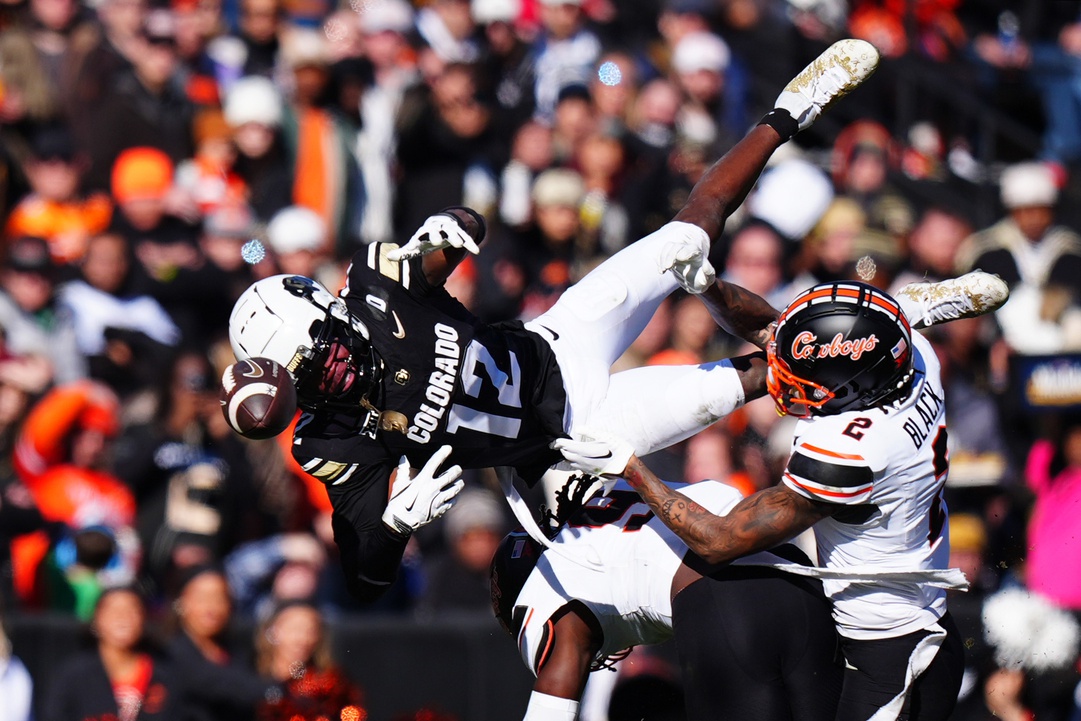NFL Analysis
3/5/24
7 min read
What's next for Russell Wilson Post–Denver Broncos Exit?
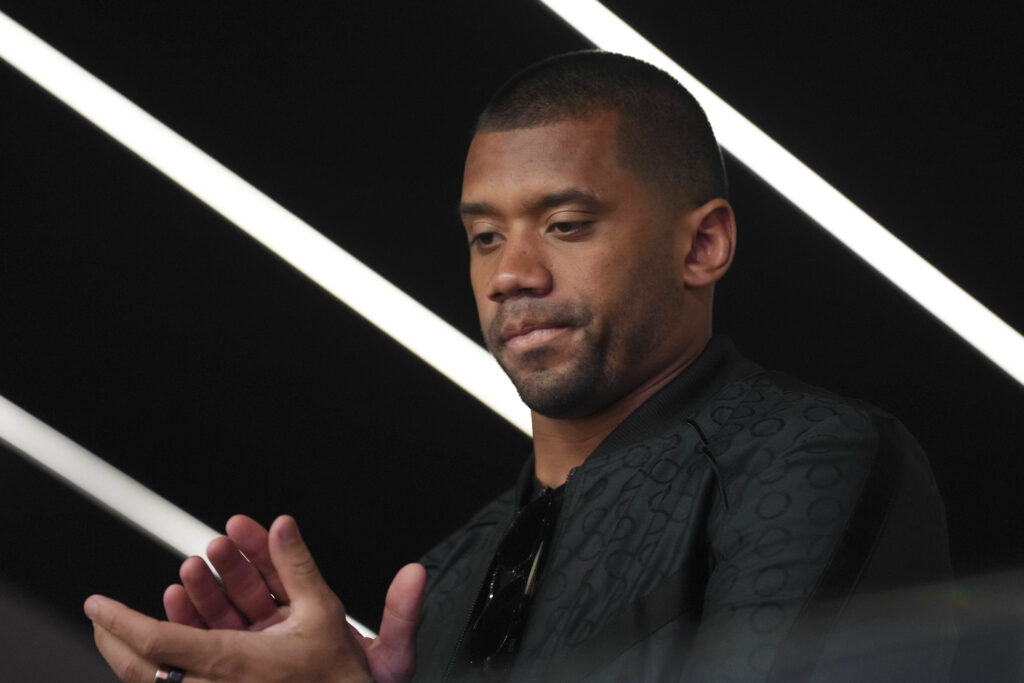
Russell Wilson is no longer a member of the Denver Broncos. Monday, the Broncos announced they would release Wilson after just two seasons. Despite Denver trading multiple first-round picks and other assets for Wilson, he started just 30 games for the team before parting ways.
The Broncos will take on a record $85 million dead-cap hit over the next two seasons. No other player has ever had a dead-cap hit of more than $40.5 million, so for the Broncos to absorb double that amount tells us what they think about Wilson. Teams aren’t really in the business of paying players a ton of money for them to not play. It’s clear Sean Payton and the Broncos' front office believe Wilson is done.
But is that truly the case? Did Denver just feel like Wilson was a bad fit in Payton's offense? Or was Wilson just not good enough to compete in a conference with Patrick Mahomes, Josh Allen, Lamar Jackson and Joe Burrow?
Let’s look at Wilson's stats from over the past two seasons to see what kind of player he is now at this stage of his career by three key passing data points.
Can Russell Wilson Be a Starter in 2024?
Third- and Fourth Down-Passing
A good indicator of which quarterbacks can play well when it matters the most is how they perform on late downs. Many of the quarterbacks with the highest passer rating on third and fourth down are all the players you would expect.
How did Wilson perform on late downs compared with his peers?
Since the start of the 2022 season, there have been 42 quarterbacks who have attempted at least 100 passes on third and fourth down. The average passer rating of the quarterbacks during that stretch is 89.3, with a YPA of 7.1.
Wilson’s number comes in very close to average with a passer rating of 89.5, averaging 7.5 YPA. His completion percentage, success rate and EPA/play are all at or above league average regarding late-down passing.
Here's a complete look at the numbers of the top qualifying quarterbacks via TruMedia:
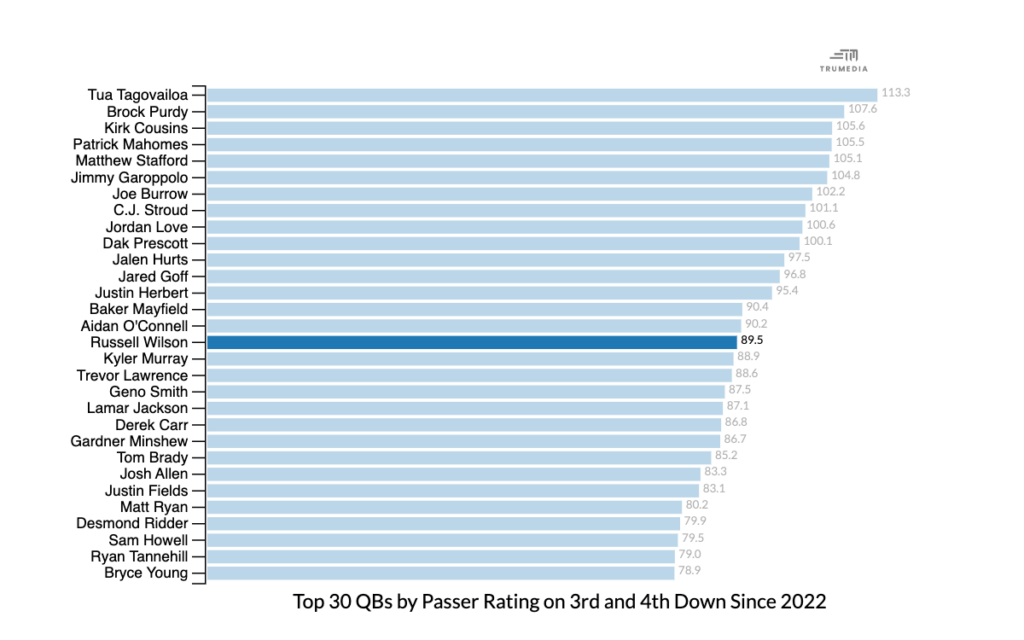
Wilson has a decent track record of success on late downs: 14 touchdowns to just seven interceptions. For the most part, when the ball leaves his hands, good things usually happen. He’s still a very accurate passer.
But the biggest knock on Wilson is his sack totals. Since 2022, Wilson has taken 51 sacks on late downs, 13 more than any other quarterback in the league. As he ages, he doesn't have the athletic ability to get away from pressure, and that affects his game. And that leads us to the following key stat…
Quarterback Performance When Pressured
All quarterbacks perform worse when they're pressured. What separates average quarterbacks from elite ones is how they handle pressure.
Early in Wilson's NFL career, there might not have been a better quarterback at handling pressure. He was nearly impossible to blitz because he found ways to escape from dirty pockets and hit receivers down the field. Now, his performance when pressured has become a weakness.
Since 2022, Wilson has averaged 6.6 YPA when pressured. On the surface, that's a pretty good number. The NFL average is 6.1, with even some of the top NFL quarterbacks averaging less YPA than Wilson. However, the issue with Wilson is that rather than attempting passes when he's pressured, he'll absorb too many sacks that inflate his YPA total.
>>WATCH: What the Broncos' Russell Wilson Decision Means for Both Sides
Since 2022, no quarterback has taken more sacks than Wilson (100). Over the last two seasons, Wilson has taken a sack on 25.8 percent of his dropbacks when pressured. To put that in perspective, quarterbacks such as Mahomes (12.3 percent) and Allen (14.5 percent) are pressured at the same rate as Wilson but are taking far fewer sacks.
Unfortunately, this has become an alarming trend for Wilson. Here's his sack rate when pressured over the last four seasons:
2020: 20.5 percent
2021: 21.2 percent
2022: 28.5 percent
2023: 23.1 percent
Wilson takes too many sacks when pressured, and they've crushed his offenses. His overall YPA are fine, but they're not enough to overcome how many sacks he takes. Only a handful of quarterbacks can get away with taking a lot of sacks and have successful offenses. That isn't Wilson at this stage of his career.
Wilson's Non-Play-Action Passing
Throwing the ball using play-action is a cheat code in the NFL. It's why the best offensive minds use it as frequently as possible. The average passer rating in the NFL on throws that come off of play action is 99.7.
Quarterbacks average a whopping 8.3 YPA off of play-action and have thrown 432 touchdowns to just 175 interceptions (2.5 percent TD/INT rate) since 2022. During that same stretch, 12 quarterbacks have averaged over 9.0 YPA when using play-action. It makes life on a quarterback easy and can boost their passing numbers if they get with a play-caller who will spam play-action passes.
But the great quarterbacks in the NFL can survive and thrive without play-action. The NFL average YPA on non-play-action passes is just 6.7 YPA over the last two seasons (minimum 200 attempts) with the top quarterbacks in the NFL all exceeding 7.0 YPA. So where does Wilson stack in the group?
Of the 43 quarterbacks who qualified, Wilson comes in at No. 9, averaging 7.0 YPA. His passer rating is a rock-solid 88.8, which is above league average. During that stretch, he had a higher passer rating on non-play-action passes than Matthew Stafford (87.5), Justin Herbert (86.8) and Allen (86.6).
This is good news for Wilson's fate in the NFL moving forward — he's not a quarterback who has to be tied to a heavy play-action offense to have success. He is still more effective when using play-action (98.1 passer rating, 8.3 YPA), but his game doesn't suffer a dramatic drop-off when he isn't using it.
What’s Next For Russell Wilson?
Wilson is now an unrestricted free agent and can sign with any team. Due to some of the offset language in Wilson's contract, his next team likely won't be on the hook for much money at all. Theoretically, that team could sign him to a veteran minimum deal and allow the Broncos to pay for his 2024 contract.
But what does Wilson have left? Is he even a starting-caliber quarterback?
The answer to that question is a resounding yes. Wilson was a fine starting quarterback last season. He cut back on the turnovers (1.8 percent INT rate) and saw his passer rating rise to 98.0. Wilson completed over 66 percent of his passes and performed at a league-average level.
>>READ: What's Next for Russell Wilson
But either his next team will have to live with him taking a bunch of sacks or needs to put him behind a strong offensive line that is going to limit the number of times he is pressured. Otherwise, it's only fair to expect his sack numbers to rise as he ages.
The other knock on Wilson is his age. He'll turn 36 during the 2024 season, and it's clear his game is in decline. His athleticism has waned, and he's not much of a rushing threat at this stage of his career.
However, there will be teams in the market for a quarterback this year that just need solid production and stable quarterback play — the Atlanta Falcons, Pittsburgh Steelers, Las Vegas Raiders and Minnesota Vikings all come to mind. But Wilson certainly won't be their No. 1 priority. All four teams would love to draft a quarterback in Round 1 of the 2024 NFL Draft but could be on the outside looking in as none of them have a top-six selection.
Look for Wilson to get another crack at a starting job this offseason, but don't be surprised if he doesn't sign quickly.
It makes sense for Wilson to wait until after the draft to sign with a team so he doesn’t end up behind a highly drafted rookie. He still has a few quality seasons left in the NFL, but he's a limited quarterback with a low ceiling.
And unfortunately, that type of quarterback isn't in demand in today's NFL.


